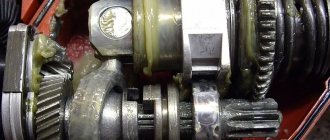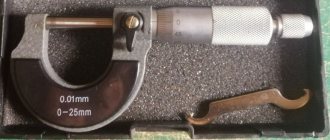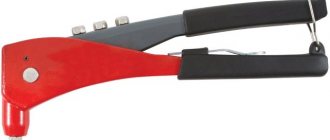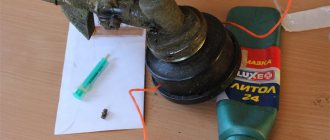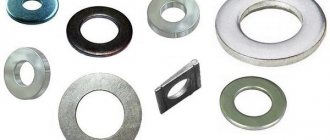- Composition of coolant (COTS)
- Additives in coolant for machine tools
- Main functions of coolant
- Coolant classification
- Cutting fluids for cutting operations
- How to properly use coolant for machine tools
When processing metals by cutting or plastic deformation, a large amount of heat is released. As a result of heating the working tool and the workpiece surface, the quality of processing deteriorates, the wear of expensive tools and equipment increases, and the structure of the surface layers of the workpiece metal changes. This, in turn, leads to a decrease in performance properties and quality of final products.
To prevent the listed manifestations and improve the quality of surface treatment of the workpiece, special cooling technical means are used - COTS.
According to their state of aggregation, COTS are divided into gaseous, liquid, and solid.
The most widely used liquid coolants are cutting fluids (cutting fluids).
Cutting fluid (coolant)
– a special substance used in the operation of metal processing machines. Each technological process of a turning or milling machine is accompanied by friction, which can lead to deformation of the workpiece, breakdown of an expensive machine or its part, and a change in the mechanical properties of the metal.
The main purpose of coolant for metalworking is to separate surfaces subject to friction and reduce the temperature of the tool. This fluid forms a lubricating film on the working surfaces, which reduces friction and the force required for cutting. The introduction of special additives into the composition of the product simplifies the cutting process - liquid molecules quickly penetrate microcracks on the metal surface and, as it were, drive a wedge between its particles.
Composition of coolant (COTS)
The composition of most metalworking coolants is approximately the same. In products of different manufacturers and names, only the concentration of a particular substance or additive needed by a specific process or metal changes.
Effective coolant for machine tools includes:
- Lubricants made from natural or synthetic oils
- Additives with various performance properties
- Substances that prevent the separation of cutting fluids into fractions
- Anti-corrosion and wear-reducing components
- Additives that reduce foaming and aggressiveness towards processed metals
Characteristics of the tape web
In general, low cutting speeds and high feed pressures are required to cut hard or hardened metals, and a significant amount of high coolant pressure is also required. On the other hand, cutting easy-to-cut metals allows you to work at high cutting speeds and low feed pressure and requires a higher degree of cooling supply. The cutting fluid absorbs and dissipates heat through evaporation during the cutting process. As heat builds up during the cutting process, a blade with a larger cross-section will become hotter much more slowly than a blade with a smaller cross-section. Free-flow synthetic coolant is more efficient than oil coolant and is more suitable for cutting large cross-sectional workpieces.
Additives in coolant for machine tools
Additives are an important component of metalworking coolants. Having a very small concentration, they can significantly improve the quality and efficiency of working with metal.
Additives for various purposes perform several important functions:
- Increases the resistance of metals to corrosion
- Anti-wear by reducing wear on tool working surfaces
- do not allow scuff marks to form on the surface of the metal workpiece during processing,
- Prevents the formation of foam, which reduces the quality of the coolant, and the appearance of oil mist, which is harmful to the skin and respiratory organs of working personnel
Characteristics of Band Saw Machine
Some bandsaws are equipped with a coolant system that sucks and drains the coolant back into the coolant tank. As a general rule, a non-coolant bandsaw should only be used for cutting easy-to-cut materials such as mild steel and aluminum. An oil mist system can also be installed on a vertical or horizontal band saw to provide lubrication to reduce frictional heat. However, the fogging system does not provide evaporative cooling of the blade or workpiece, therefore, the cutting speed must be reduced by 15%-20%. Dry parting without coolant requires half the normally recommended cutting speed.
Main functions of coolant
Lubricating and cooling fluids for metal-cutting machines perform the following main functions:
- Cools cutting tools that get hot during operation and increases their service life
- Improving the quality of metal surface treatment
- Removing dust, dirt, metal shavings, etc. from working surfaces.
- Lubrication of the friction zone to increase the service life of cutters, reduce the coefficient of friction and heat generation
- Increasing machine productivity by increasing speed, improving quality and precision of processing
Which is better: prepare coolant yourself or buy factory-made
Hobby metalworkers persistently develop their own recipes for making emulsions for machine tools for various reasons: someone wants to create an analogue of imported coolant, which has disappeared from sale, someone simply likes to achieve the desired results themselves.
Do-it-yourself coolants are cheaper than factory ones, but they are inferior in terms of performance characteristics and service life, and some homemade compositions are also very dangerous to health.
Today, Russian enterprises produce complete analogues of coolant from world brands and publish interchangeability tables, with the help of which you can choose a high-quality and inexpensive emulsion for a lathe. Therefore, you should not conduct risky home experiments with making formulations according to recipes from the Internet.
Coolant classification
Each technological process requires a coolant, the properties of which will best meet the specifics of the material and the characteristics of the machine.
Typically, metalworking production uses several types of metalworking coolants:
- Oil coolants.
Their base is mineral or synthetic oil. To obtain special properties of the liquid, additives are added to the composition. Such coolants perfectly lubricate surfaces, but do not reduce temperatures well, so they are used for soft metals for simple work.
- Water-miscible coolants
– these liquids may contain alcohols, emulsifiers, oils, electrolytes, additives, etc. They cool tools and metals well, but have modest lubricating characteristics,
- Mineral cutting fluids
– produced from petroleum products, used primarily for the operation of milling and lathes for cutting steel,
- Synthetic and semi-synthetic coolants
– these types of cutting fluids are made on the basis of a mixture of water-soluble half-mirs with the addition of surfactants, inhibitors, biocides, etc.
- Coolant emulsions
– compositions with a higher concentration of dispersed components compared to water-miscible ones. Such fluids have excellent lubricating and anti-wear characteristics.
In addition to composition, cutting fluids can be classified according to other criteria, for example:
- Based on the method of preparation or composition of the working fluid, a distinction is made between emulsols - ready-made liquids that contain additives that prevent separation - and coolant concentrates, mixed with water before use to obtain coolant emulsions.
- By viscosity, flash point, acid number, etc. (oil coolants)
Solving cooling problems on a band saw
The use of coolant is so important that it cannot be overemphasized. High-quality coolant is one of the most important factors for efficient cutting and increasing the life of your band saw. Usually there are no problems with the use of coolant, but if problems do arise, then the tips below can help correct them. Rust on the band saw or its working parts. The ratio of water to coolant concentrate may be too high. You need to check the emulsion ratio of the coolant with a refractometer and mix it to the correct ratio recommended by the coolant manufacturer. Keep in mind that contaminants (unwanted impurities) in the coolant, microscopic organisms and fine metal dust (or shavings) can accelerate the development of rust in the coolant. It is necessary to clean the entire coolant system and fill in a new emulsion. Foaming coolant. Coolant emulsions with a high content of coolant concentrate may have a tendency to foam. You need to check the ratio of the coolant emulsion with a refractometer and mix it to the correct ratio. Fine metal dust (or shavings) in the coolant tank can take away the antifoam properties of the coolant emulsion. Clearing the coolant system of these chips may help. Air entering through a loose hose or passing through fittings can cause foaming, as can a coolant tank emulsion level that is below the pump's demand level. All coolant hoses and the coolant emulsion level in the coolant tank should be checked. Bad odor or surface foam in the coolant tank is usually caused by contaminants, such as band saw oil leaks, that allow microorganisms to grow in the coolant emulsion heated during the cutting operation or warm shop floor temperature. A low coolant concentration ratio will contribute to this problem. All oil leaks must be checked and repaired. It is necessary to clean the entire coolant system and fill in a new emulsion. Reduced performance of the band saw. The investigation of this problem should begin with a complete mechanical inspection of the belt and its guides. If they are in good condition, then you need to check the coolant emulsion ratio and whether there are fine metal shavings at the bottom of the coolant tank. It can be circulated and fed into the cutting zone, significantly dulling the blade, causing a rough or wavy surface on the workpiece being cut. It is necessary to clean the entire coolant system and fill in a new emulsion. Hot shavings or blue shavings. It is necessary to check that the coolant emulsion ratio is not too high (there is not too much water). This can be seen by visually examining the coolant jet for the presence of a sufficient amount of coolant concentrate in the cutting zone. If after all the above problems still exist, then they are probably no longer related to the coolant emulsion. Instead, they were most likely caused by incorrect blade selection, cutting speed or cutting feed.
| You can order any of your materials at our production Contacts: , , , |
Additional technical information can be read in the “Articles” section.
Cutting fluids for cutting operations
Let us note which cutting fluids are most common when carrying out various cutting operations on lathes:
- One and a half percent solution of soda ash in boiled water (for rough grinding)
- Water, trisodium phosphate and sodium trinitrate – increases anti-corrosion resistance
- Water, emulsol and soda - ensures high quality grinding
- Oil (industrial and linseed) and kerosene - for high-precision work with expensive cutters
- Sulfofresol and kerosene - for deep metal drilling
- Kerosene – when working with aluminum and its alloys
Metal forming also requires the use of metalworking coolants, but such materials must have special properties. Metal forming is characterized by significant forces and low sliding speed between the workpiece and the tool, therefore the coolant must be sufficiently viscous and resistant to delamination at high temperatures. Often, such fluids contain fine-flaked graphite, which minimizes friction in the plastic deformation zone.
Special lubricants and cooling materials are also used when working with aluminum and its alloys. This metal tends to stick to the surfaces of the cutting tool with which it comes into contact. For this reason, cutting fluids for aluminum must provide high quality finishing of the workpiece. When working with aluminum, emulsions of coolant based on fatty acids and substances with ethylene glycol or glycerin are usually used.
Belt cooling methods
The most effective method of using coolant for the operation - high-performance cutting of metal on a band saw machine - is a coolant supply system flowing from above through guide tubes on the side where the band blade enters the workpiece being cut and on the side where the band blade leaves it. Using this coolant method effectively reduces frictional heat and provides maximum lubrication as the blade passes through the guides over the workpiece being cut. This ensures that coolant is effectively supplied to the cutting zone. For small bandsaws that are not equipped with a coolant tank, a small and relatively inexpensive oil mist system can pay for itself in a short period of time. The design of the belt blade often results in high coolant loss when using the guide tube coolant method. The angle of supply of the guide tube and the small thickness of the channel can only cover a blade of small cross-section, thus, little heat is removed from the cutting zone. Consequently, an oil mist system is usually more effective in providing reduction of frictional heat from the belt. It is also very important that both sides of the tape should be lubricated evenly. If one side of the belt is not sufficiently lubricated, the belt will usually pull toward the more lubricated side.

